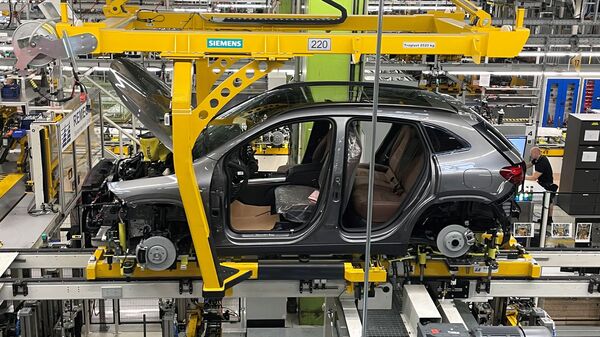Among the main issues highlighted in the report is the continued increase in prices of major raw materials like steel and platinum group metals—both essential for auto production.

India’s auto sector is likely to be hit with margin pressure once again during the first quarter of FY26, a recent report by HDFC Securities has stated. The report does not give an optimistic outlook for original equipment manufacturers (OEMs) since a mix of elevated input prices, softer demand, and regulatory changes could dent profitability in the short term.
Among the main issues highlighted in the report is the continued increase in prices of major raw materials like steel and platinum group metals—both essential for auto production. These higher input prices are likely to be a significant burden on gross margins, especially in a quarter that usually is characterized by muted seasonal demand.
Also Read : Indian auto exports rise sharply as home market remains sluggish in June: Report
With volumes anticipated to fall from post-festive season peaks, the effect of operating deleverage—reduced revenue spread over fixed costs—could further reduce EBITDA margins for a number of players in the two-wheeler, passenger vehicle, and commercial vehicle segments.
Two-wheelers hit by adverse mix, EV slowdown
The prospects for two-wheeler OEMs look especially taut. Weak domestic product mix, lower export contribution, and evaporating EV penetration have systematically eroding earnings potential collectively. In addition to these impacts, a limited price increase, increasing legislative regulations – specifically OBD 2 norms for two wheelers (April 1, 2025) and AC cabins for CVs is a must (June 8, 2025) – will also impact demand elasticity.
Ancillary sector faces global headwinds
OEMs are not alone in this situation; the auto ancillary industry is also grappling with weaker global demand and uncertainty regarding global tariffs. Tyre makers could have some insulation from this type of demand decline as raw material prices are on the decline; aluminium price reductions would be a positive for the component makers. However, increasing ocean freight and possible supply chain issues create obstacles, and especially for those companies focused on exports.
Also Read : Indian auto industry in panic mode over rare earth magnet crisis. Why it matters so much??
Rare Earth magnet shortage adds to long-term risks
A potential shortage of rare earth magnets—essential for EV and ICE parts—is creating a further source of anxiety. With China still in charge of world processing thanks to cost and environmental issues, India’s alternatives are limited. Local manufacturing or importation from other markets such as Japan are long-term alternatives, but in the near term, OEMs might have no alternative but to acquire fully assembled parts from China. This action would increase expenses, hamper localisation efforts, and impact adherence to the government’s Production-Linked Incentive (PLI) scheme.
Although India’s automobile industry has been very resilient in the past few quarters, the beginning of FY26 could put that to the test. With a mix of increasing costs, regulatory shifts, and global uncertainties at play, the producers might have to rethink their plans to safeguard margins and maintain growth.
Get insights into Upcoming Cars In India, Electric Vehicles, Upcoming Bikes in India and cutting-edge technology transforming the automotive landscape.
First Published Date: 13 Jul 2025, 08:00 am IST







